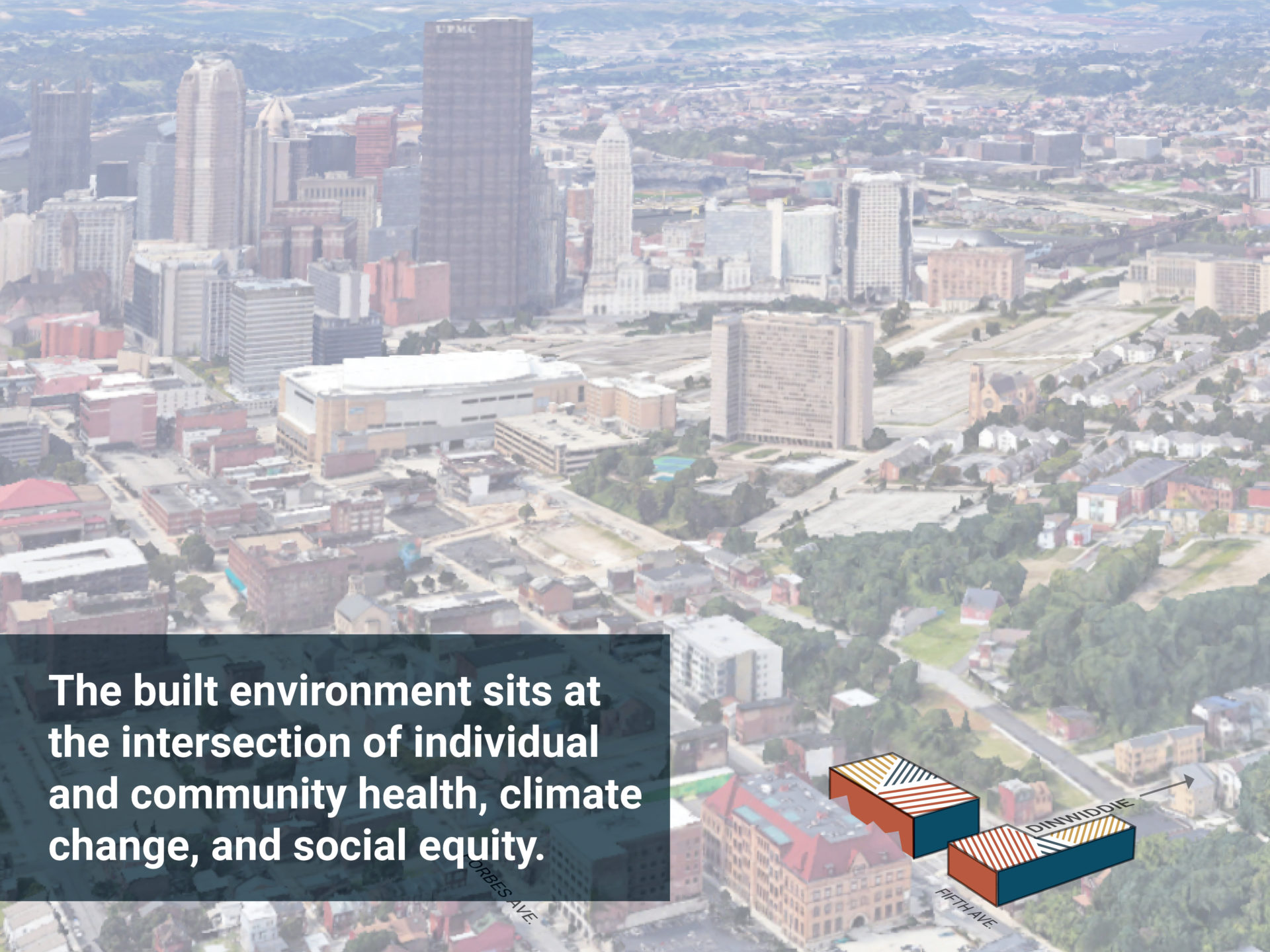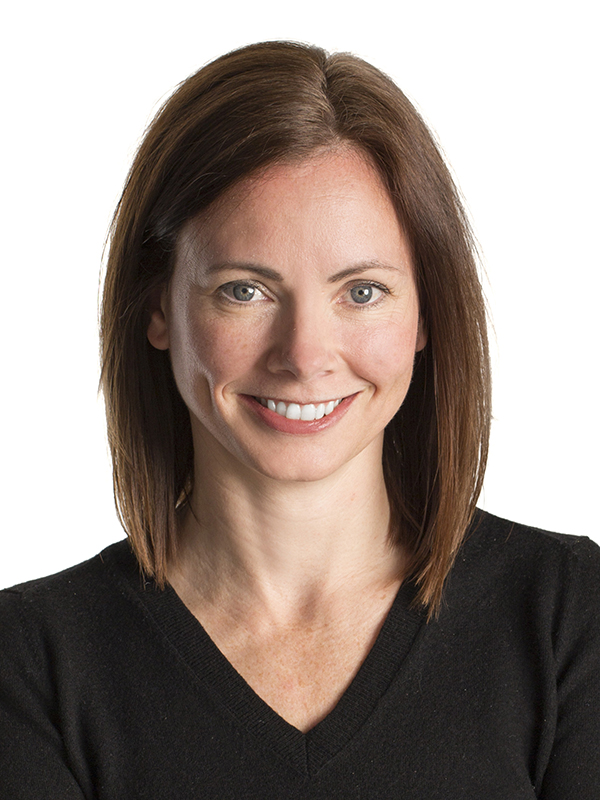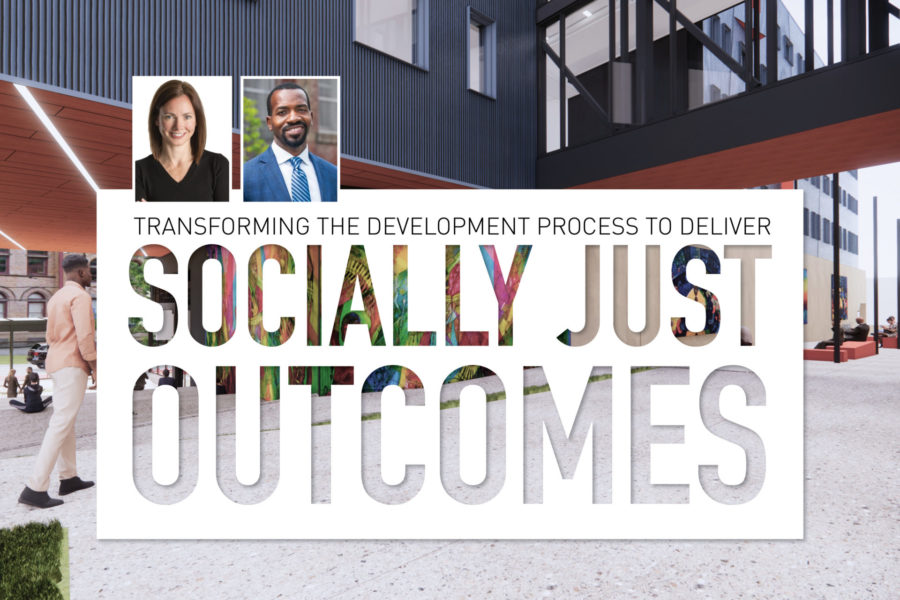Insights
Nov 23, 2021 _ insights
Transforming the Development Process to Deliver Socially Just Outcomes
The built environment sits at the intersection of individual and community health, climate change, and social equity. As professionals who play an essential role in the creation and maintenance of that environment, architects and developers have a special obligation to ensure what we build is designed to support everyone.
This was the message that Derrick Tillman, President & CEO of Bridging the Gap Development, and I recently shared with the 2021 Getting to Zero Forum, an event dedicated to zero energy and zero carbon buildings.
As part of a panel concerned with “Transforming Traditional Project Delivery to Achieve Equitable Building Decarbonization,” we shared our experience developing Fifth & Dinwiddie. A transformative mixed-use, mixed-income development, Fifth & Dinwiddie is being built where Pittsburgh’s Hill District meets Uptown.

Fifth and Dinwiddie development located just north of bustling downtown Pittsburgh.
Our presentation discussed:
- The importance of a multipronged approach to sustainability. While it’s important to deploy sustainable building design and technologies within a building, we stressed the importance of site considerations such as access to mass transit, walkable neighborhoods, and bike infrastructure to enable residents to use less carbon as they go about their daily routines.
- Decarbonizing existing buildings. The technical feasibility and cost-effectiveness of carbon-neutral, new construction is well-established. However, it can be challenging to adapt existing buildings, so they are more sustainable in terms of energy use and inhabitant health. We shared our experience with Fifth & Dinwiddie, part of which turns an existing public works building into a mixed-use building that is tracking for Passive House, Fitwel, and RESET Air certifications.
- Methods of approaching equitable decarbonization. Equitable decarbonization requires a holistic approach that not only reduces energy use, but in turn lowers the cost burden of utility bills for low-income people, avoids displacement, provides healthy homes, and economic support. We described how Fifth & Dinwiddie is doing this, not only through passive house design, but through continuous air quality monitoring and by providing a space for clean energy job training. It’s an ambitious program that will set a new standard for development.
- Coordination and buy-in. We also discussed steps, such as an Owner’s Project Requirements Meeting, which can be taken to ensure that the whole design team (including consultants and construction managers) are aligned around a deliberate plan with tangible sustainability and certification goals. Taking these kinds of steps early in the design process can streamline communications and decision making as the process unfolds.
You can view our presentation to the Getting to Zero Forum here. To learn more about the development at Fifth & Dinwiddie, visit our case studies for Fifth & Dinwiddie East and Fifth & Dinwiddie West.
_________
 Amanda Markovic is a principal at GBBN, co-founder of the firm’s Design Issues Series (DIS), and an AIA Pittsburgh Blueprint for Better Champion. She is deeply committed to equitable development and empowering communities to shape the environments in which they live. This comes through in her work on community libraries (including the Carnegie Library of Pittsburgh, East Liberty and Knoxville renovations) as well as her work on Fifth & Dinwiddie East and West.
Amanda Markovic is a principal at GBBN, co-founder of the firm’s Design Issues Series (DIS), and an AIA Pittsburgh Blueprint for Better Champion. She is deeply committed to equitable development and empowering communities to shape the environments in which they live. This comes through in her work on community libraries (including the Carnegie Library of Pittsburgh, East Liberty and Knoxville renovations) as well as her work on Fifth & Dinwiddie East and West.
Amanda also regularly publishes her insights on library design, including “Novel Strategies for a Novel Virus: Designing Resilient Libraries for a Pos-COVID World” and “Information Center or Community Center: The Next Generation of Libraries Must be Both.”




